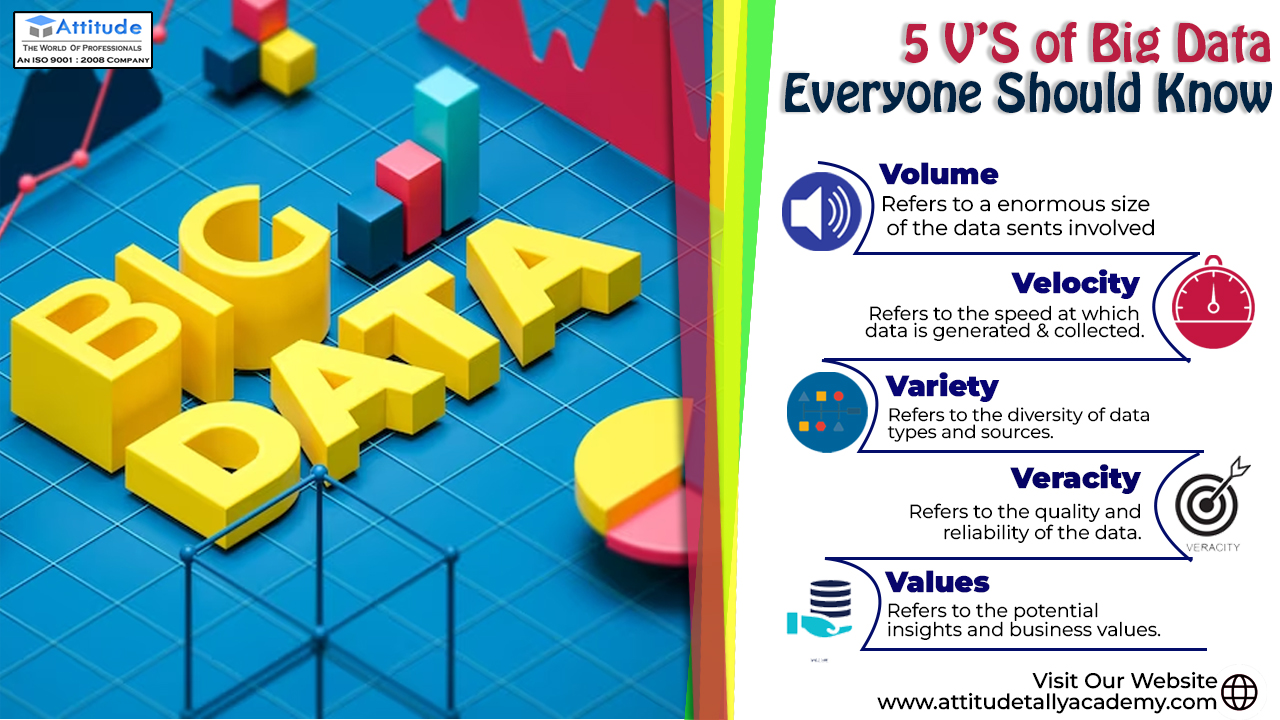Introduction
In today’s digital landscape, data is the new currency, and businesses are constantly striving to leverage it to gain insights and make informed decisions. However, the sheer volume, velocity, variety, veracity, and value of data can be overwhelming without a proper understanding of these fundamental principles. That’s why we’re here to break down the 5 V’s of Big Data, helping you navigate the world of Big data analytics with confidence.
Volume:
The first V of Big Data is volume, referring to the immense amount of data generated every second. From social media interactions to online transactions, the volume of data is growing exponentially. Big Data analytics allows businesses to process and analyze this massive volume of data to uncover patterns, trends, and correlations that can drive strategic decision-making.
Velocity:
Velocity represents the speed at which data is generated and processed. With the advent of real-time data streams from IoT devices, social media platforms, and online transactions, businesses must analyze data swiftly to extract actionable insights. Big Data analytics tools enable organizations to process data in real-time, empowering them to respond promptly to market changes and customer demands.
Variety:
The variety of data refers to its diverse forms and sources, including structured, unstructured, and semi-structured data. From text documents and images to sensor data and video streams, Big Data encompasses a wide range of formats. Analyzing this diverse data requires advanced techniques such as natural language processing, sentiment analysis, and machine learning to extract meaningful insights.
Veracity:
Veracity pertains to the quality and reliability of data. In the era of Big Data, organizations often grapple with data inconsistencies, errors, and biases. Ensuring data veracity involves implementing data quality checks, validation processes, and error detection mechanisms to maintain the accuracy and integrity of data. By addressing veracity issues, businesses can enhance the trustworthiness of their analytics results and make more informed decisions.
Value:
The ultimate goal of Big Data analytics is to derive value from data. By harnessing the power of advanced analytics techniques, businesses can uncover hidden patterns, predict future trends, and optimize operational processes. Whether it’s improving customer satisfaction, increasing revenue, or reducing costs, Big Data analytics enables organizations to unlock valuable insights that drive business growth and innovation.
In conclusion,
Understanding the 5 V’s of Big Data—volume, velocity, variety, veracity, and value—is essential for organizations looking to harness the full potential of their data assets. By embracing Big Data characteristics and leveraging advanced analytics tools, businesses can gain a competitive edge in today’s data-driven world. Whether you’re exploring new market opportunities, optimizing supply chain operations, or enhancing customer experiences, Big Data analytics holds the key to unlocking actionable insights that propel your business forward. So, dive into the world of Big Data analytics and unleash the power of data-driven decision-making to drive success in your organization
Suggested Link: – Data Analytics Data Science Power BI



